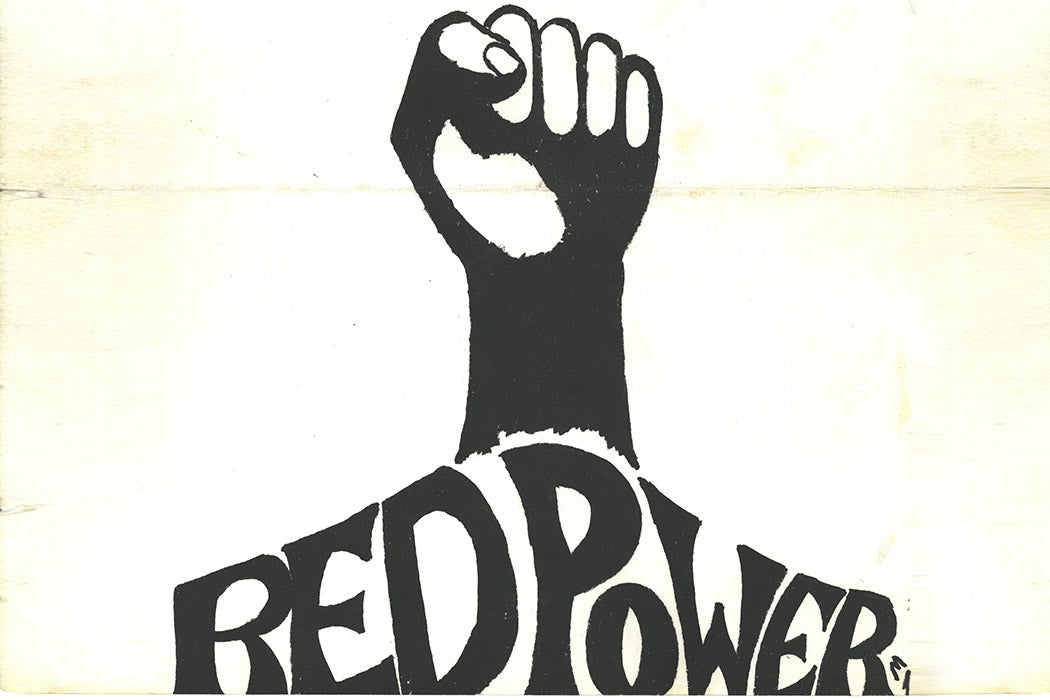The North American Red Power movement, led by Native peoples in the 1960s and the 1970s, was marked by a growing consciousness of a pan-Indigenous identity, itself underscored by events such as the Occupation of Alcatraz and the Occupation of Wounded Knee. Art and writing, including the journalism captured in Red Power newspapers, were an integral part of the movement, allowing what literature scholar Seonghoon Kim describes as a more general—that is, non-activist—audience to engage with and contribute to its ideas. Newspapers with purposeful titles such as Americans Before Columbus, Akwesasne Notes, Alcatraz Newsletter, the Indian News, the Indian Voice, and the Warpath helped spread the Red Power philosophy.
“As was true for Red Power activism in general, the pan Indigenous aspects of Red Power newspapers were informed not only by the well-known activists, the intellectuals and elites, but also by the contributions of ordinary people,” writes Kim.
While it may not be viewed as standard journalism, lyrical poetry was often included in the pages of the newspapers, echoing Indigenous story-telling traditions.
“The inclusion of traditional prayer songs in Red Power newspapers conforms to a cultural and political pattern of reviving Indigenous tradition in contemporary circumstances,” Kim explains.
Poems also challenged the assumptions of colonial rule. For example, Al Doney (Chippewa) criticized both the degrading labels imposed on tribal peoples and actions performed by the United States military during the Vietnam War, asking
Was it I that dropped the bomb across the sea and made the people suffer?
Was it I that used the teachings of the Bible to overrun a peaceful people?
Was it I that destroyed the beauty of the land?
The Red Power newspaper Americans Before Columbus published on a wide range of Indigenous communities and issues, pointedly highlighting “energy and natural resources in various articles and focused notably on tribal lands in northern Arizona.” In an article written by the National Indian Youth Council about the impacts of uranium on Southwest communities, the concern “was not limited to a single, specific tribal land but, rather, represent a broader set of communities.” the article linked Indigenous peoples and “our Mother Earth” in the fight to protect each other.
“The article identifies the local tribal people and their land as a single organism, an organism that ultimately represents the unity between Native Americans and the Earth in general,” Kim writes.
As with the general movement, Red Power newspapers offered a resource to express the continuity of Indigenous culture that colonialism had failed to eradicate.
Weekly Newsletter
“These dreams of the renewal and continuance of American Indian culture and tradition manifested in the call to reclaim and preserve Indigenous lands, an aspect of the Native American that many colonizers believed, or wanted to believe, to be dead,” Kim explains.
Today, Indigenous media such as Indian Country Today continues to highlight the experiences of Indigenous people.







